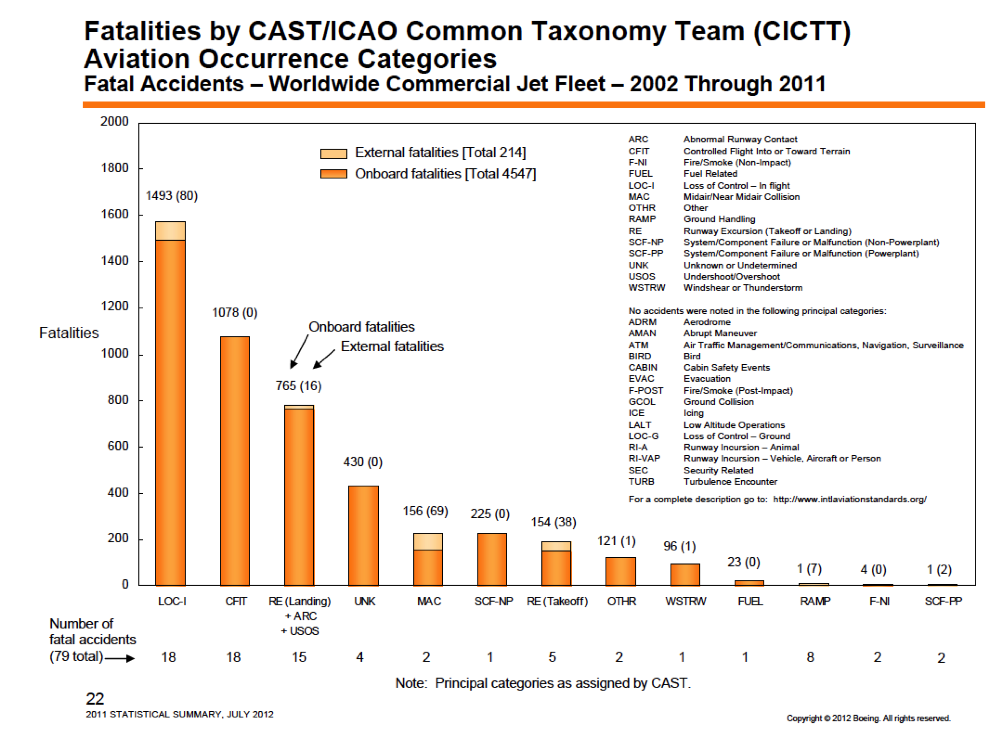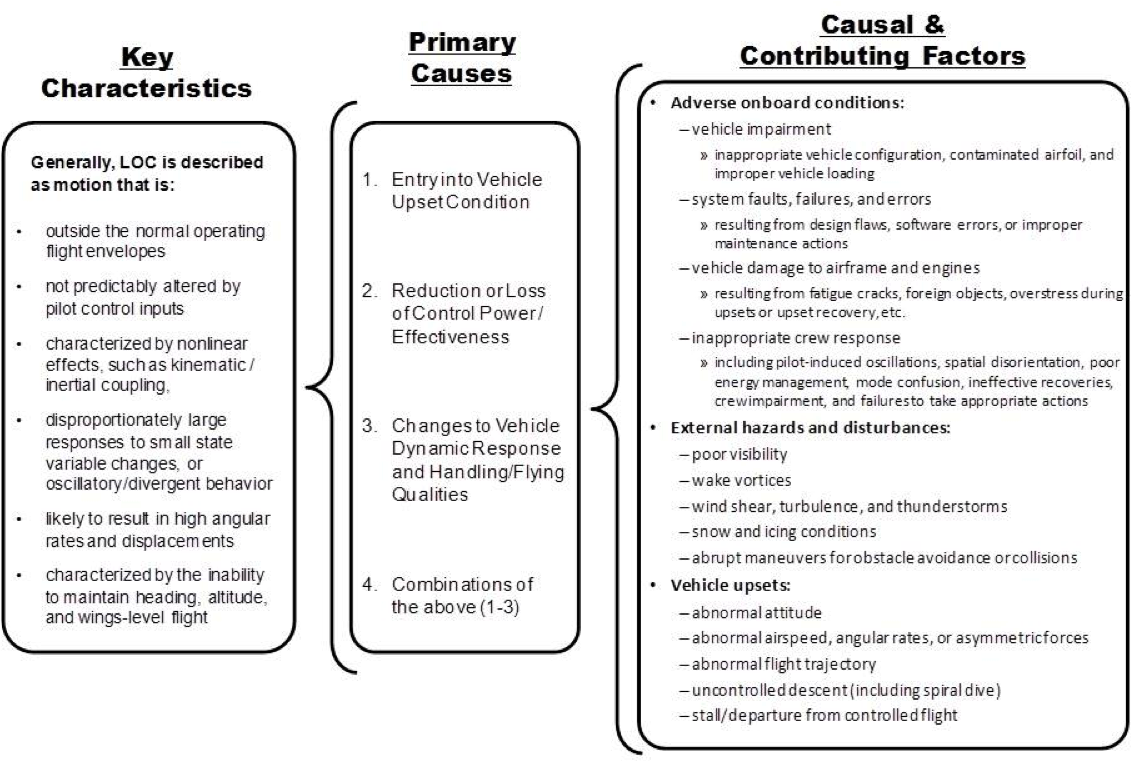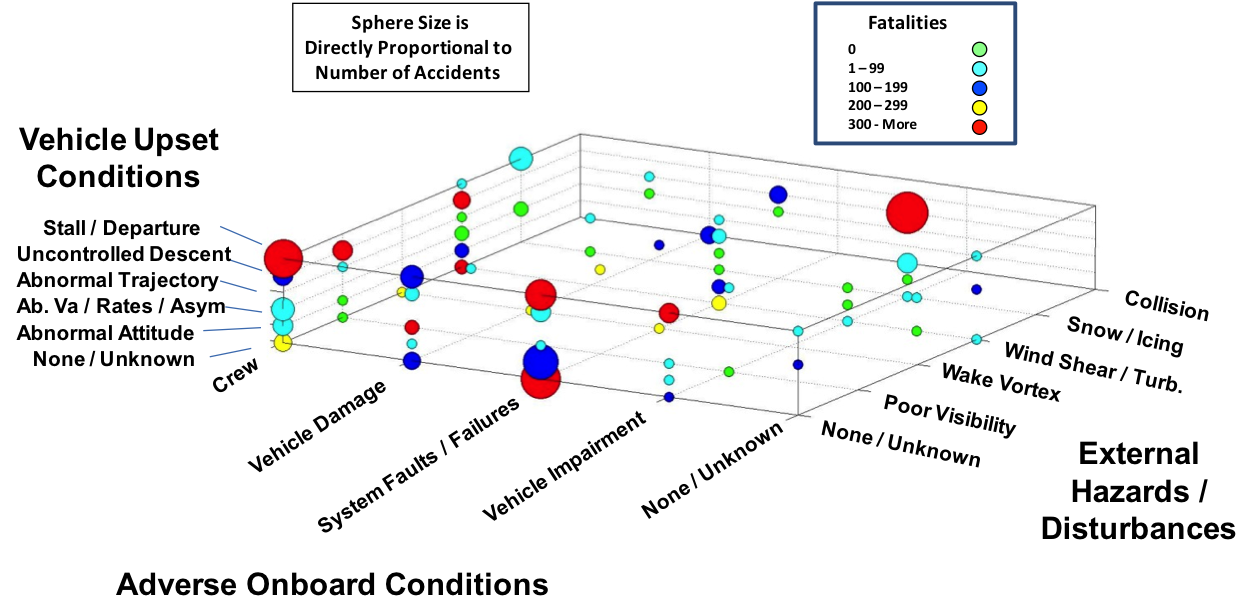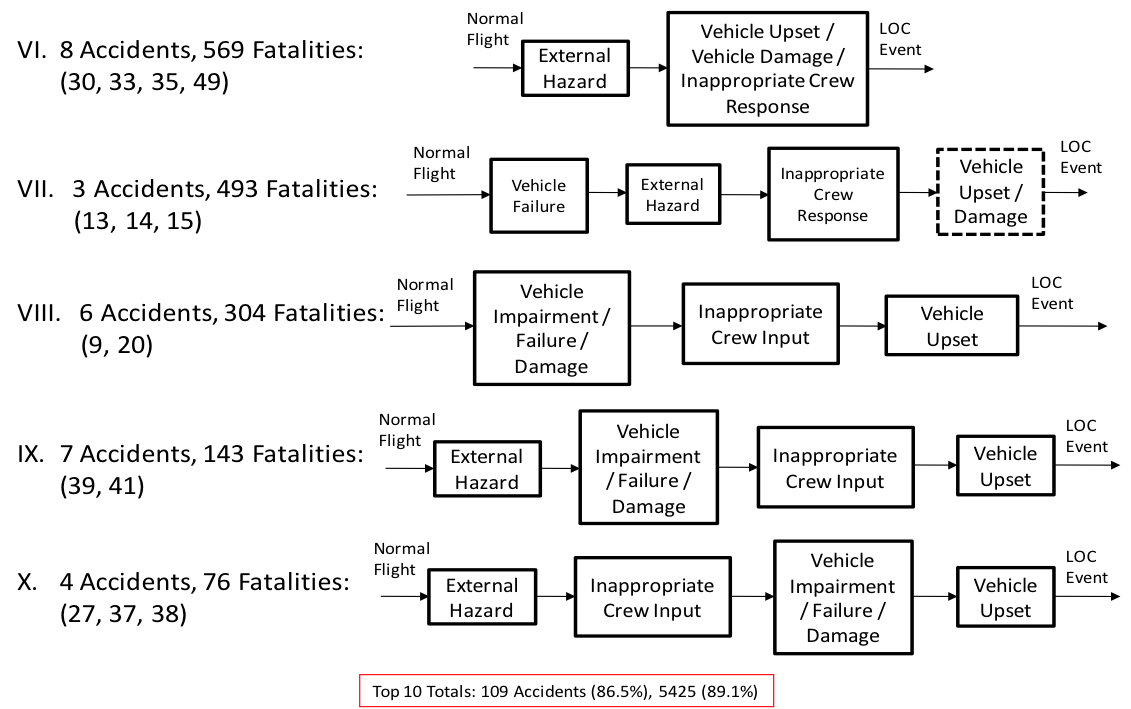Aircraft loss of control is a leading cause of fatal accidents across all transport airplane and operational classes. Figure 1 provides a statistical categorization of fatal accidents involving large transports (≥ 60,000 lbs). LOC can be described as motion that is: outside the normal operating flight envelopes; not predictably altered by routine pilot control inputs; characterized by nonlinear effects, such as kinematic/inertial coupling; disproportionately large responses to small state variable changes, or oscillatory/divergent behavior; likely to result in high angular rates and displacements; and characterized by the inability to maintain heading, altitude, and wings-level flight. LOC is therefore fundamentally a dynamics and control problem, but there are many causal and contributing factors that can lead to LOC. The primary causes include: entry into a vehicle upset condition; reduction or loss of control power; changes to the vehicle dynamic response in relation to handling/flying qualities; and combinations of these causes. There are numerous factors that have historically led or contributed to LOC. These can be grouped into three major categories: adverse onboard conditions, external hazards and disturbances, and abnormal flight conditions (or vehicle upsets). LOC causal and contributing factors within these categories are summarized in Fig. 2. Adverse onboard conditions includes vehicle problems (i.e., impairment, failures, or damage) and inappropriate crew response. External hazards and disturbances consist of inclement weather conditions, atmospheric disturbances, and obstacles that require abrupt maneuvering for avoidance. Vehicle upset conditions include a variety of off-nominal or extreme flight conditions and abnormal trajectories. The complexity of LOC is clearly illustrated in Fig. 2, particularly considering that many LOC accidents involve combinations of the causal and contributing factors that are listed.
LOC is also a complex event, usually resulting from multiple causal and contributing factors that can occur individually or (more often) in combination. There is therefore no single intervention strategy that can be readily identified to prevent LOC accidents. A detailed analysis of aircraft accidents was performed to identify worst case combinations of LOC precursors and how they sequence in time. The analysis performed in Ref. 4 included accidents that involved vehicle upsets, as well as those involving failures, impairment, or damage to the flight control capability of the aircraft or to the vehicle airframe (when the damage was sufficient to alter vehicle dynamics and control characteristics) whether or not these factors led to an upset. The data set used in the analysis consisted of 126 accidents that resulted in 6087 fatalities during the period from 1979–2009. The analysis included the identification of worst case combinations of causal and contributing factors and a detailed compilation of LOC sequences based on temporal ordering of causal and contributing factors. A list of the top 10 LOC summarized sequences was developed, which represents 86.5% of the accidents considered in the paper. A set of 7 generalized LOC sequences was also defined, which are representative of 88.9% of the accidents considered in the study. A preliminary identification of potential future LOC risks was also presented. Figure 3 provides an example scatter plot from this analysis, and Figure 4 provides the top 10 sequences identified in this analysis. This analysis is currently being updated by the LOC RWG.




